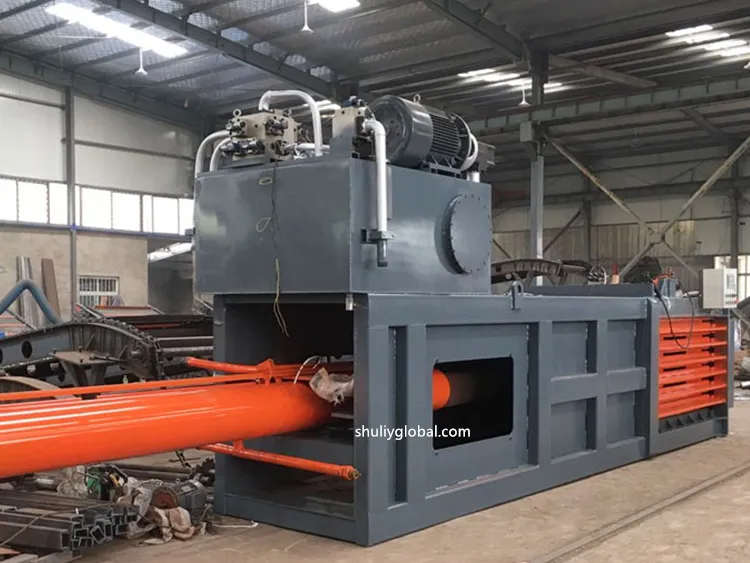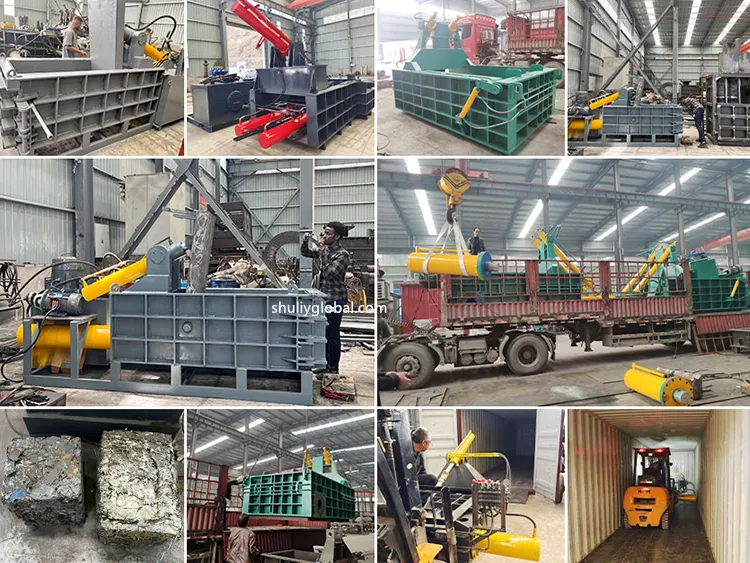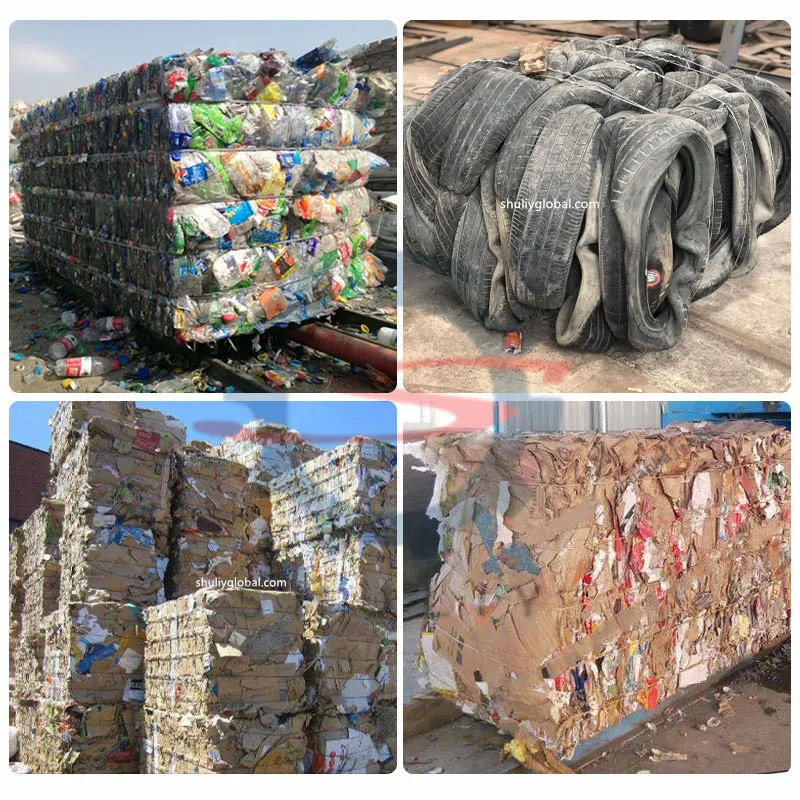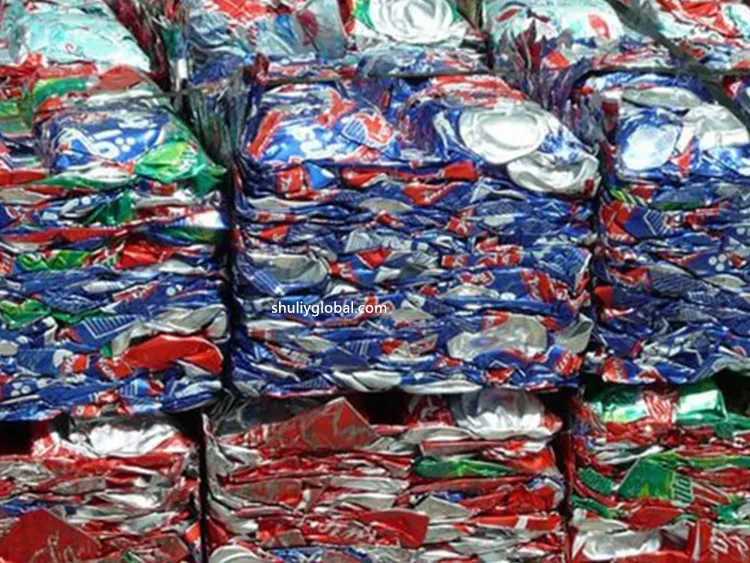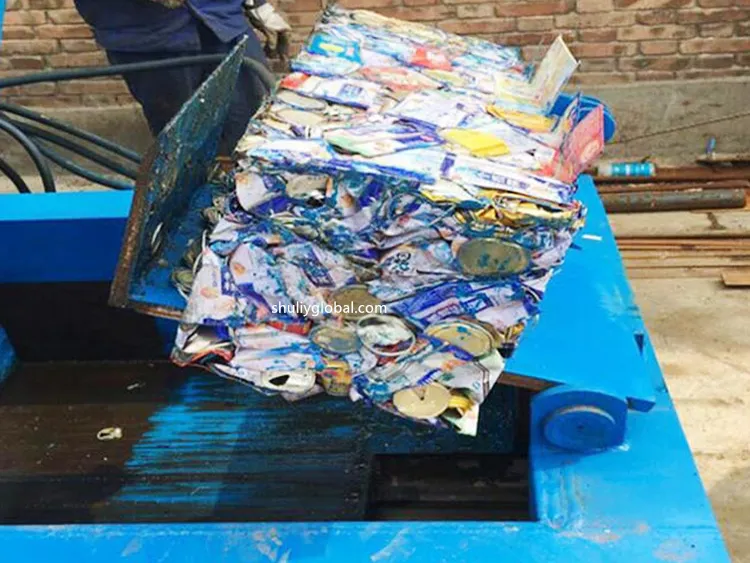In today’s pursuit of green recycling and efficient operations, efficient and economical waste disposal has become a crucial challenge for all industries. Horizontal balers, core equipment in waste recycling and logistics, are becoming a key tool for many companies to reduce costs and increase efficiency with their superior performance. This article will provide a comprehensive analysis of horizontal balers to help you gain a deeper understanding of this critical piece of equipment.
Function of a Horizontal Baler: What Exactly is a Horizontal Baler?
A horizontal baler, as the name suggests, is a machine that compresses and bales materials horizontally. Its primary function is to compress loose, bulky waste materials or products into uniform, dense, and neatly shaped packages using tremendous mechanical pressure, and then securely strap them with strapping.
The core workflow can be simplified as follows: material loading → compression → strapping → bale removal. This process dramatically reduces the volume of the material, laying a solid foundation for subsequent storage, transportation, and recycling.
What are the important indicators of horizontal balers?
The performance of a horizontal baler is a key indicator of quality.
The performance of a horizontal baler directly determines its processing capacity and efficiency, primarily focusing on the following key parameters:
Baling pressure (tons): This is the most important indicator, directly determining the density of the resulting bales. Pressure ranges from tens to hundreds of tons, with the higher the pressure, the denser the bales.
Bag size: This determines the size of individual bales and the amount of material processed per bale. Users should select a bale size based on their material volume and desired bale size.
Bag size and weight: The length, width, height, and estimated weight of the compressed bales are crucial for transport and stacking planning.
Efficiency (bags/hour): The number of bales completed per unit time is a key measure of production efficiency.
Motor power: This affects the equipment’s energy consumption and power output stability.
Horizontal balers are suitable for a wide range of materials:
Horizontal balers aren’t universal, but they are extremely versatile, primarily targeting renewable resources with recycling value:
Paper: Corrugated paper, used cardboard boxes, newspapers, books, and other materials commonly handled by recycling centers.
Plastics: PET bottles, plastic film, woven bags, and various rigid plastics.
Metals: Cans, metal scraps, scrap metal, and scrapped car hulls (usually requiring a larger metal baler).
Textiles: Used clothing, cloth, and textile scraps.
Other: Straw, foam, and other materials.
The final product of a horizontal baler:
After processing, the messy raw materials are transformed into:
High-density, regular bales: such as square paper and iron bales.
Uniform specifications: Easily transported and stacked using pallets and forklifts, significantly improving warehouse space utilization.
Secure strapping: Steel or plastic-steel strapping is used to prevent loosening during transportation.
Why Choose a Shuliy Horizontal Baler?
Investing in a horizontal baler can bring immediate benefits to your business:
Significant Volume Reduction: Volume can be reduced by up to 80%, directly saving up to 70%-80% in storage and transportation space, thereby reducing storage and logistics costs.
Improved Transportation Efficiency: Regularly shaped bales facilitate loading, unloading, and stacking, significantly increasing the load capacity per vehicle and doubling transportation efficiency.
Increased Recycling Value: Neat, high-density bales are more popular in the scrap market and fetch a higher price.
Improved Work Environment: Baling loose materials keeps the work site clean and safe, avoids fire hazards, and meets environmental standards.
High Level of Automation: Modern horizontal balers often utilize PLC control systems for automatic compression and strapping, reducing labor intensity and allowing one person to operate multiple units.
Suitable Applications for Horizontal Balers: Which Industries Need Them?
Horizontal balers are used in nearly all industries that generate large quantities of recyclable waste:
Waste recycling stations: Core equipment for processing various paper and plastic products.
Paper mills and carton factories: Used for baling and storing recycled paper raw materials.
Ports and docks: Processing waste materials and recyclable garbage.
Textile companies: Baling used textile waste and scraps.
Metal smelting and processing plants: Processing metal scrap.
Large supermarkets and logistics centers: Processing large quantities of discarded cartons and packaging materials.
Agriculture: Baling straw, forage grass, etc.
Horizontal Baler Operating Precautions: Prioritizing Safety and Efficiency
To ensure the long-term stable operation of the equipment and the safety of operators, the following must be observed:
Professional Training: Operators of horizontal balers must undergo professional training and be familiar with the equipment’s structure, performance, and operating procedures.
Safety First: While the horizontal baler is in operation, it is strictly forbidden to insert hands, feet, or any tools into the compression chamber. During maintenance, the power must be disconnected and a warning sign must be displayed.
Proper Material Feeding: It is strictly forbidden to feed hard objects such as metal and stones into the horizontal baler along with raw materials to avoid damage to the material bin and pressure plate.
Regular Maintenance: Regularly check the hydraulic oil level and quality of the horizontal baler and replace it on schedule; lubricate all lubrication points; and inspect electrical wiring, cables, and hydraulic lines.
Overloading is strictly prohibited: Do not handle materials that exceed the equipment’s design capacity or force pressurize the machine.
Market Prospects for Horizontal Balers: Future Development Trends
With the increasing global emphasis on the circular economy and sustainable development, the market prospects for horizontal balers are promising:
Policy-driven: Governments around the world are implementing waste sorting and resource recycling policies, creating a significant demand for waste handling equipment.
Energy-saving and environmentally friendly: Low-noise, low-energy-consumption, and high-efficiency horizontal balers will become mainstream in the market.
Customized Demand: Specialized horizontal balers designed for specific materials (such as lightweight foam and hazardous waste) are emerging to meet the needs of niche markets.
Contact us to learn more about Horizontal balers
Horizontal balers have long surpassed simple compression to become a strategic tool for modern businesses to achieve cost control, efficiency improvement, and environmental compliance. Whether you’re a scrap recycler, a manufacturer, or a logistics operator, choosing the right horizontal baler means opting for a more efficient, cleaner, and more profitable operation. In the era of resource recycling, it’s undoubtedly an indispensable partner.

